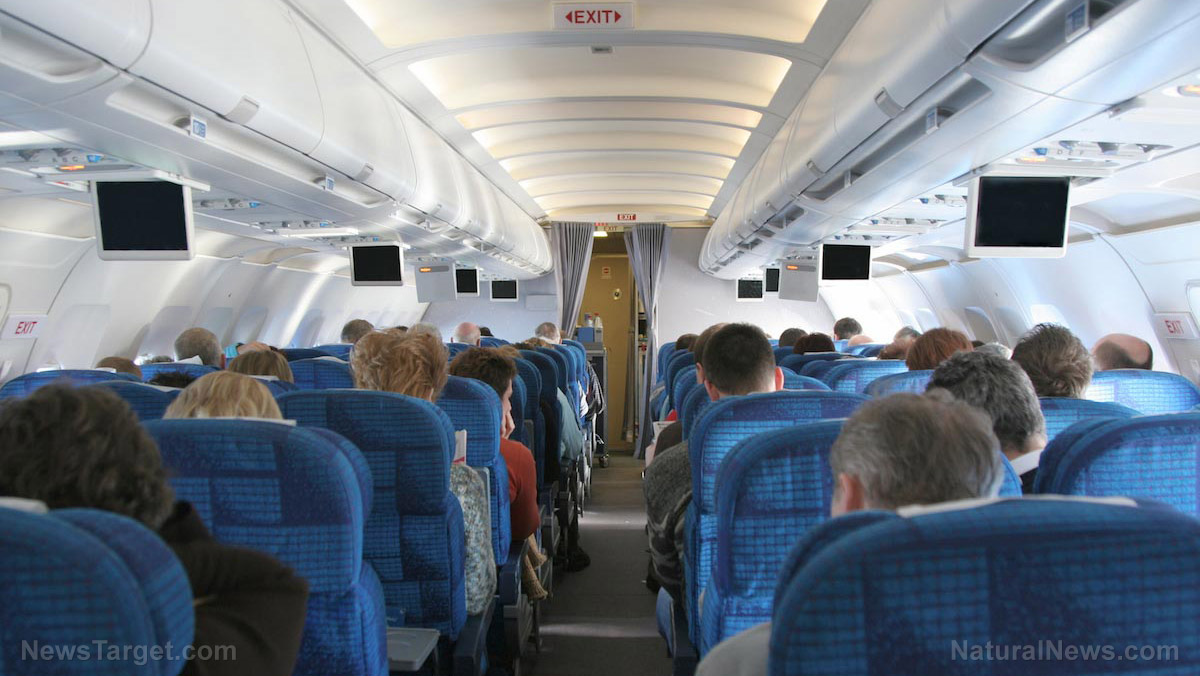Passengers on Delhi to Hong Kong flight TEST POSITIVE for the coronavirus despite testing negative before flying
04/30/2021 / By Ramon Tomey

Passengers on a flight bound to Hong Kong from Delhi in India tested positive for the Wuhan coronavirus (COVID-19). The positive test results came as a surprise since the 52 travelers all presented negative test results prior to boarding. Because of these new infections, Hong Kong’s strategy to keep the Wuhan coronavirus at bay – in place since January 2021 – has taken a hit.
The passengers were on board an aircraft operated by Indian carrier Vistara. From the Indian capital, the plane flew into Hong Kong on April 4. The city’s authorities did not disclose the total number of passengers, but reports surmised that there could have been as much as 188 passengers on the flight.
Hong Kong has one of the strictest entry and quarantine measures in the world. All passengers flying in must submit a negative COVID-19 test 72 hours before departure. They are also required to take another COVID-19 test upon arrival and are mandated to quarantine themselves for a three-week period.
The passengers on board the Vistara flight fulfilled all these requirements. They submitted negative COVID-19 test results prior to boarding, undertook the mandatory COVID-19 test upon arrival and isolated themselves in hotels. It was only during the three-week quarantine period that the positive results emerged.
University of Hong Kong (HKU) scientists are now working with the Hong Kong Department of Health to sequence genomes from the 52 coronavirus-positive passengers. The Hong Kong government said several cases have also been detected on flights departing from Mumbai. As such, it banned all flights from India as well as neighboring Pakistan from April 20 to May 3. Meanwhile, Vistara said it did everything it could to minimize the spread of the Wuhan coronavirus onboard its aircraft.
The Wall Street Journal talked to a number of passengers who contracted the pathogen aboard the Vistara flight, among them Rashida Fathima. The 52-year-old said she believes that she was infected on board – despite her family wearing masks while onboard and avoiding the plane’s toilet. Fathima told WSJ that some passengers were coughing repeatedly during the flight, and families walked their crying children through the airplane isles.
Scientists weigh in on how the previously uninfected passengers contracted the pathogen
A number of experts have put forward four main theories as to why the 52 passengers ended up being infected.
One theory is that the passengers could have been infected in India after their pre-flight COVID-19 test. American epidemiologist Eric Feigl-Ding said some infections “may have occurred after the initial 72-hour pre-departure time window” following the first COVID-19 test. He added: “India cases increased 60 percent each week for the last two weeks.” The south Asian country recently reported record highs in new daily infections – with 352,991 new cases reported on April 26. It previously chalked up 346,786 new cases on April 24. (Related: Airlines looking to implement broad coronavirus testing for passengers to keep industry alive.)
A second theory posited that potential cases may have fallen through the cracks due to either India’s overloaded health system or passengers turning in fraudulent test results. The second wave of infections that hit the Hindu-majority nation brought its health care system to its knees. Shortages of oxygen cylinders and antiviral medications became rife, and outdoor cremations were conducted as crematoriums were unable to keep up with the number of victims.
Another theory said that the passengers may have contracted the Wuhan coronavirus in one of the hotels they stayed in for the three-week quarantine period. Feigl-Ding said in a tweet that Hong Kong authorities identified only eight cases prior to hotel quarantine, with the later cases emerging during the isolation period. “It could also be hotel transmission to some degree too. Hotel room cross-infections have been observed in Australia’s hotel quarantine system too,” he elaborated. (Related: Aussie authorities trace Perth coronavirus infections to hotel security officer.)
Nevertheless, the epidemiologist lauded the city’s vigilance in addressing potential cases. “If it weren’t for hotel quarantine – Hong Kong would have completely allowed these [positive cases] to begin spreading in the community. This is why border quarantines are critical,” he commented.
Yet one other theory stated some passengers aboard the flight may have been infected with a particularly severe strain of the Wuhan coronavirus. The cabin’s compact space and people removing their masks to eat would have contributed to its transmission. However, health experts have insisted that contracting the pathogen from a fellow passenger is “extremely low” – thanks to advanced plane ventilation systems. HKU assistant professor and clinical virologist Dr. Siddharth Sridhar commented: “The risks of air travel are generally quite manageable with staggered seating and consistent mask usage, especially when using toilet facilities.”
Hong Kong was one of the first territories impacted by the pandemic in March 2020. But strict border controls and authorities’ vigilance kept the spread of the virus at bay. According to data from Reuters, the city has a COVID-19 caseload of 11,749 with 209 deaths.
Visit Pandemic.news to read more articles about COVID-19 transmission aboard aircraft.
Sources include:
Tagged Under: air travel, airplane cabin, coronavirus infections, covid-19 pandemic, covid-19 testing, COVID-19 transmission, Hong Kong, India, international flight, pandemic, test results, Vistara, Wuhan coronavirus
RECENT NEWS & ARTICLES
Pandemic.News is a fact-based public education website published by Pandemic News Features, LLC.
All content copyright © 2018 by Pandemic News Features, LLC.
Contact Us with Tips or Corrections
All trademarks, registered trademarks and servicemarks mentioned on this site are the property of their respective owners.





















